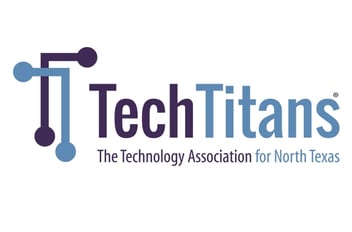How do you create a brand name that distinguishes your business and resonates with customers? This article explores effective brand naming, from principles to processes, to help you choose the right name for your brand.
Key Takeaways
-
Choosing a strong brand name is crucial for market differentiation and resonates with consumers, encapsulating brand identity and core values.
-
The UMAID criteria (Understandable, Memorable, Adaptable, Interesting, and Distinctive) are essential in evaluating the effectiveness of a brand name.
-
A structured brand naming process, including Discovery, Brainstorming, Refinement, Testing, and Final Selection, helps in reducing risks and enhancing brand identity.
Understanding Brand Naming

Brand naming involves choosing a name for startups, new products, or rebranding established companies. This step is crucial as it distinguishes you in the market and resonates with consumers. A strong brand name is a valuable asset, creating a lasting association with your product or service and encapsulating the brand identity, business functions, and core values.
Effective brand naming combines structured approaches and creative input. Successful names are often simple yet impactful, reflecting the company’s values succinctly. A well-thought-out naming strategy can streamline the process of finding a great name.
What Makes a Good Brand Name?
A good brand name is a vital communication tool that aids identification, memorability, and brand recall. It should be easy to remember, aiding customers in finding your business effortlessly. Memorable and distinctive names help the brand stand out in a crowded market and spark curiosity about the brand’s story or offerings.
The UMAID criteria—Understandable, Memorable, Adaptable, Interesting, and Distinctive—ensure a brand name is effective and enduring. Clarity and simplicity are crucial, avoiding ambiguity.
An adaptable name can grow with the company, avoiding constraints as the brand evolves. Names that spark curiosity draw in consumers, increasing engagement.
The Role of Brand Identity
Brand names are crucial in establishing identity and influencing consumer loyalty. A strong name aids differentiation, making it easier for consumers to accept and remember the brand. Well-crafted names enhance a company’s distinctiveness in a competitive landscape.
Uniform branding across all platforms boosts customer trust and engagement. Consistent brand identity across channels reinforces recognition and loyalty, creating a seamless experience for customers and fostering increased trust and engagement.
Types of Brand Names

Brand names can be grouped into descriptive, suggestive, and abstract categories. Each type has its unique advantages and challenges, catering to different branding needs and strategies.
Understanding these types aids in selecting a suitable naming strategy. Descriptive names clearly articulate the product or service’s function. Evocative names use metaphor or analogy to convey the brand’s offerings. Invented and lexical names, often neologisms, create a unique market identity.
Descriptive Brand Names
Descriptive brand names make the business’s function clear, aiding immediate recognition and understanding. However, they can be limiting as the business expands.
Evocative Brand Names
Evocative brand names capture the brand’s essence and create a positive emotional connection. Using metaphor or analogy, they convey the brand’s offerings, making them a memorable brand and engaging.
Examples include Verizon, Fanta, and Patagonia, which capture the brand’s key message without describing it too literally.
Invented and Lexical Brand Names
Invented brand names, often neologisms, stand out in the market. Examples include Etsy, Google, GoDaddy, and Skype. While these names often have available .com domains, they can be difficult to pronounce, impacting word-of-mouth exposure.
Lexical brand names use existing words or combinations to create a unique identity. These names can be playful and engaging but must be carefully crafted to avoid obscurity or confusion, balancing creativity and clarity to resonate with the target audience and establish a new brand while using the same language.
Steps in the Brand Naming Process

A structured brand naming process reduces risk and guides the journey, following thorough brand research and positioning. The five steps are Discovery, Brainstorming, Refinement, Testing, and Final Selection. Deep thinking and legwork are crucial to finding the right brand name through a proven process.
Challenges in the naming process include finding a catchy name, ensuring good design aesthetics, and checking URL availability. Collaboration enhances brand identity by incorporating diverse opinions.
Consider budget, business specifics, team size, and timeline during the naming process.
Discovery Phase
The discovery phase, the first step in the brand naming process, gathers insights to define the brand’s target audience and market position. This phase includes defining the purpose and aspirations for the brand name, conducting a competitive audit, and establishing decision-making criteria.
Written Q&A and interviews are common methods for gathering information during this phase.
Brainstorming Techniques
Brainstorming is a critical part of the brand naming process, aimed at compiling a long list of raw ideas through free association. Generate at least 15 names, expanding to 20 if possible. Ideas should be unconventional and take risks, considering words that represent the brand, including phrases, names, places, and adjectives.
Including key stakeholders and creatives like product managers, marketers, brand strategists, writers, and journalists in brainstorming sessions enhances idea diversity. Providing guidelines or constraints can productively guide these sessions.
If you feel stuck, involve the right people and adhere to your principles.
Refinement and Testing
The refinement phase involves compiling and gradually narrowing down a long list of potential names. This process can be exhausting yet thrilling, requiring careful selection and testing. Consider marketability, aesthetics, relevance, brand voice, and differentiation during testing.
Vetting a brand name ensures it is not already taken and helps narrow down your options. Testing methods include surveys, focus groups, and interviews. Legal checks for trademarks are essential to avoid conflicts with existing brands.
Before finalizing a brand name, have it reviewed by intellectual property attorneys.
Practical Tips for Choosing Your Brand Name

Choosing a brand name requires a practical approach and a checklist of attributes agreed upon by all stakeholders. Generating a shortlist that reflects the brand personality and key benefits is crucial.
Tools like Naminum can generate numerous variations of your keyword to explore different branding possibilities.
Use the UMAID Approach
The UMAID approach—Understandable, Memorable, Adaptable, Interesting, and Distinctive—outlines criteria for an effective brand name. This approach ensures the brand name meets these essential qualities.
Adhering to these criteria ensures the brand name is both effective and enduring.
Avoid Common Pitfalls
Names that are difficult to spell or pronounce can hinder customer engagement. Choosing a name based on current trends or clichés can make it outdated quickly. Names that confine a business to a specific niche can limit future growth and flexibility.
Checking trademark availability and ensuring the name is not already in use online can help avoid legal issues.
Utilizing Brand Naming Tools

AI-based name generators facilitate the brand naming process by generating unique name suggestions based on user input. Tools like Namelix save time in the brainstorming phase and provide diverse options that might not be immediately considered.
These tools enhance the user experience by learning from saved preferences to improve future suggestions.
Namelix
Namelix generates naming options based on keywords. More specific keywords yield more relevant options. Namelix produces unique, memorable names tailored to a user’s business idea.
Brandroot
Brandroot offers potential brand names with corresponding website addresses. With the purchase of a brand name, Brandroot provides logo design for the chosen name.
Users can select their price point before searching for names, making Brandroot a flexible tool for different budgets.
Namium
Namium generates dozens of iterations based on the user’s keyword. Keeping the keyword short enhances Namium’s efficacy in generating brand names.
Clicking on each option reveals .com availability for purchase.
Launching Your Brand Name
Launching a brand name involves integrating it into your brand architecture and ensuring consistency across all channels. After choosing a name, focus on messaging and visual identity. A brand tracker can measure efforts and track progress.
Hiring a branding agency can help overcome difficulties in the naming process.
Integrating with Brand Architecture
Securing domain names is crucial for a meaningful digital presence. Brandroot provides potential brand names with corresponding website addresses, aiding in online presence.
Ensuring Consistency Across Channels
Using a consistent brand name across platforms reinforces brand recognition. Consistent brand identity is crucial for effective marketing strategies, creating a seamless customer experience.
Maintaining brand name consistency leads to increased customer loyalty and trust.
Summary
A strong brand name is the cornerstone of a memorable and effective brand. Understanding the brand naming process, exploring different types of brand names, and following practical tips can significantly enhance your branding efforts. Utilizing AI-based tools and ensuring consistency across all channels are crucial steps in launching a successful brand name.
As you embark on your brand naming journey, remember that a powerful name can set the stage for your brand’s success. Stay creative, strategic, and consistent, and you’ll create a brand name that truly resonates with your audience.
Frequently Asked Questions
What is the purpose of the blog post?
The blog post serves to assist readers in naming their brand by describing common name types and offering practical tips for the naming process. This guidance is essential for establishing a strong brand identity in a competitive market.
What is a descriptive brand name?
A descriptive brand name effectively communicates what the company does, providing clarity about the business. However, it may restrict growth opportunities as the company evolves.
Can you give an example of an evocative brand name?
Buffer is an excellent example of an evocative brand name, as it effectively conveys the essence of the company's function while allowing room for interpretation and emotional connection. This type of naming strategy engages users and enhances brand identity.
What is the risk associated with invented brand names?
The risk associated with invented brand names is that they can be challenging to pronounce, which may hinder effective word-of-mouth marketing. This can ultimately limit brand recognition and consumer engagement.

 8 min read
8 min read




 10 min read
10 min read

